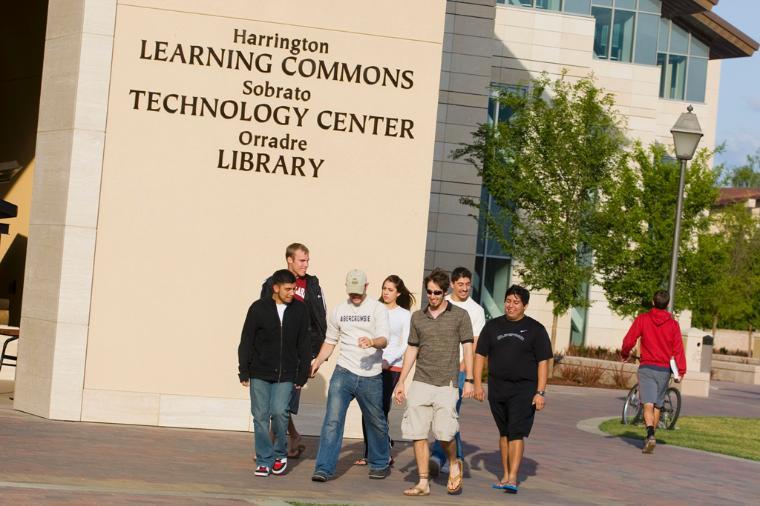Though twice the size of the previous building, the University's new library consumes the same amount of energy.

Click on the headers below to learn more about the sustainable features of the Harrington Learning Commons, Sobrato Technology Center, and Orradre Library. The Library was highlighted in a Sustainability Update because over 150 tons of steel and 400 tons of concrete were recycled during demolition. Over 40 tons of green waste was composted as well.
Buildings account for roughly 40% of energy demand in the United States. Title 24, California’s Energy Efficiency Standards for buildings, was designed to reduce California’s energy demands by emphasizing energy efficiency measures. This building will perform roughly five percent better than required by Title 24. During the day, over 90% of publicly accessible space is lit by the sun.
Water-related energy consumption represents approximately 15-20% of all energy consumed by the state of California. All 39 toilets in the building are flushed with recycled water, the first of their kind on our campus. The building’s landscaping is also irrigated with recycled water.
Construction and demolition in the United States generates over 136 million tons of waste each year. Santa Clara University requires contractors to recycle as much construction and demolition waste as possible. Over 90% of demolition waste from Orradre Library was recycled or reused. Furniture pieces in the building are made with recycled or recyclable materials.
The building was designed to minimize the use of materials that are environmentally toxic and/or pose a threat to occupant health. Carpeting, paints and furniture materials used in the building emit low or no volatile organic chemicals (VOCs). Recyclable carpet tiles allow for easy replacement of damaged carpeting. The building’s Living Room is composed of moveable furniture, designed to be arranged by students to best accommodate their studying needs. Raised floors have many benefits over traditional flooring by providing the building with the ability to adapt to future needs.